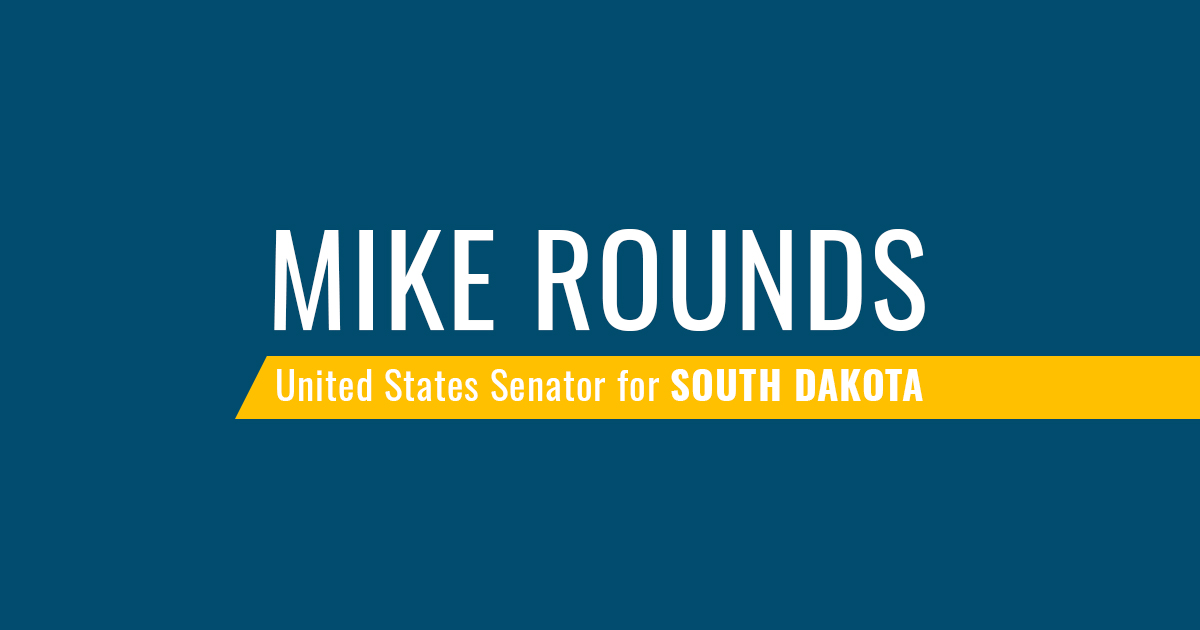Source: United States Senator for South Dakota Mike Rounds
WASHINGTON –U.S. Senator Mike Rounds (R-S.D.), Ranking Member of the Senate Banking, Housing and Urban Affairs Committee’s Subcommittee on Housing, Transportation and Community Development, provided opening remarks during Tuesday’s hearing on “Safe at Home: Preserving and Improving Federally Assisted Housing.” Sharon Vogel, Executive Director of the Cheyenne River Sioux Tribe Housing Authority, provided testimony at this subcommittee hearing. You can watch the full hearing by clicking here.
Click here to watch Senator Rounds’ opening remarks
Opening remarks as prepared for delivery:
Thank you, Madame Chair, and thank you to our witnesses for taking the time to attend today’s hearing. I would especially like to thank Ms. Sharon Vogel from my home state of South Dakota for her willingness to testify. I look forward to hearing from all of you.
When it comes to federally assisted housing, I think we all can agree that the goal is to provide a safe living space for those who need it. However, the means to achieve that end can be debated. Now is the perfect time to take a step back and evaluate how current allocations are being utilized and how to better tackle these issues. While a lack of resources could be seen as a primary problem, I believe that agencies across the board can be more efficient with their program implementation and mission-critical functions. After these bureaucratic and efficiency problems are addressed, that’s when additional funding can be considered.
For example, HUD has instituted mitigation efforts to decrease radon exposure. However, for the six years between 2013 and 2018, HUD did not test for radon in a single unit operated by a housing authority directly managed by the Department. How can we justify additional allocations for a program that is not utilizing its resources in the first place? Sometimes it really isn’t a funding issue – it is a utilization and implementation issue.
There are similar issues when it comes to Native American housing, as well. Native housing funds come from both HUD and the Bureau of Indian Affairs. The BIA has been dubbed the least effective and most mismanaged federal agency, which becomes apparent when you take a deeper look into condition of federally-assisted Native American housing. According to the National American Indian Housing Council, 40% of on-reservation housing is inadequate, a fact that is unmistakable to me every time I drive through a reservation back home and see many of the homes boarded up and unfit for use.
One of the most pressing housing issues prevalent on reservations is overcrowding. According to a 2017 HUD report, nearly 16% of American Indians and Alaska Natives (AIAN) households experienced overcrowding; compared to the national average of 2.2% This level of overcrowding not only affects those living in the houses, but the structures themselves. A staggering 12% of AIAN households have heating issues compared to just .1% of the total United States. This is simply unacceptable.
However, there is a bit more to tell in regards to the struggles Native Americans face with housing. Despite having mismanaged funds and inefficiencies at the agency-level, there is a true lack of resources available to this population. This issue is perpetuated by the fact that much of the population data coming from reservations is significantly undercounted. The undercounting happens for a multitude of reasons, one being that families are afraid to admit the amount of people they have living in their homes. When the population is not adequately counted, it results in inadequate funding levels and the problems, such as overcrowding, persist.
It is apparent there are a wide range of public housing safety issue across the country. It’s time we work to address these problems, and I look forward to joining Chair Smith in this effort. Especially in regards to some of the most prevalent, and least addressed, safety issues that are found on reservations in South Dakota.
Again, we welcome all of you here today and I look forward to hearing from our witnesses on the state of housing safety in our country. Thank you.
###
